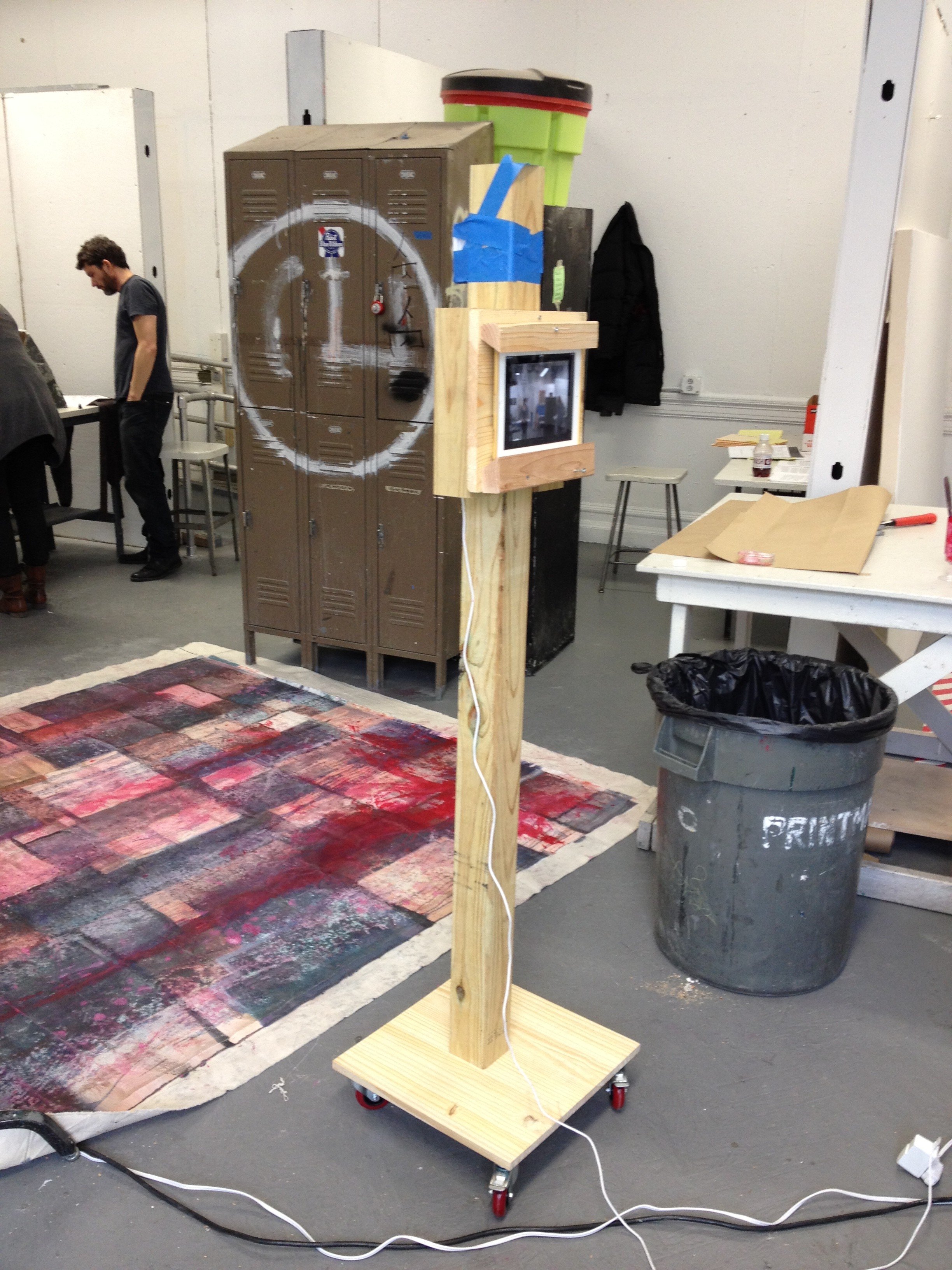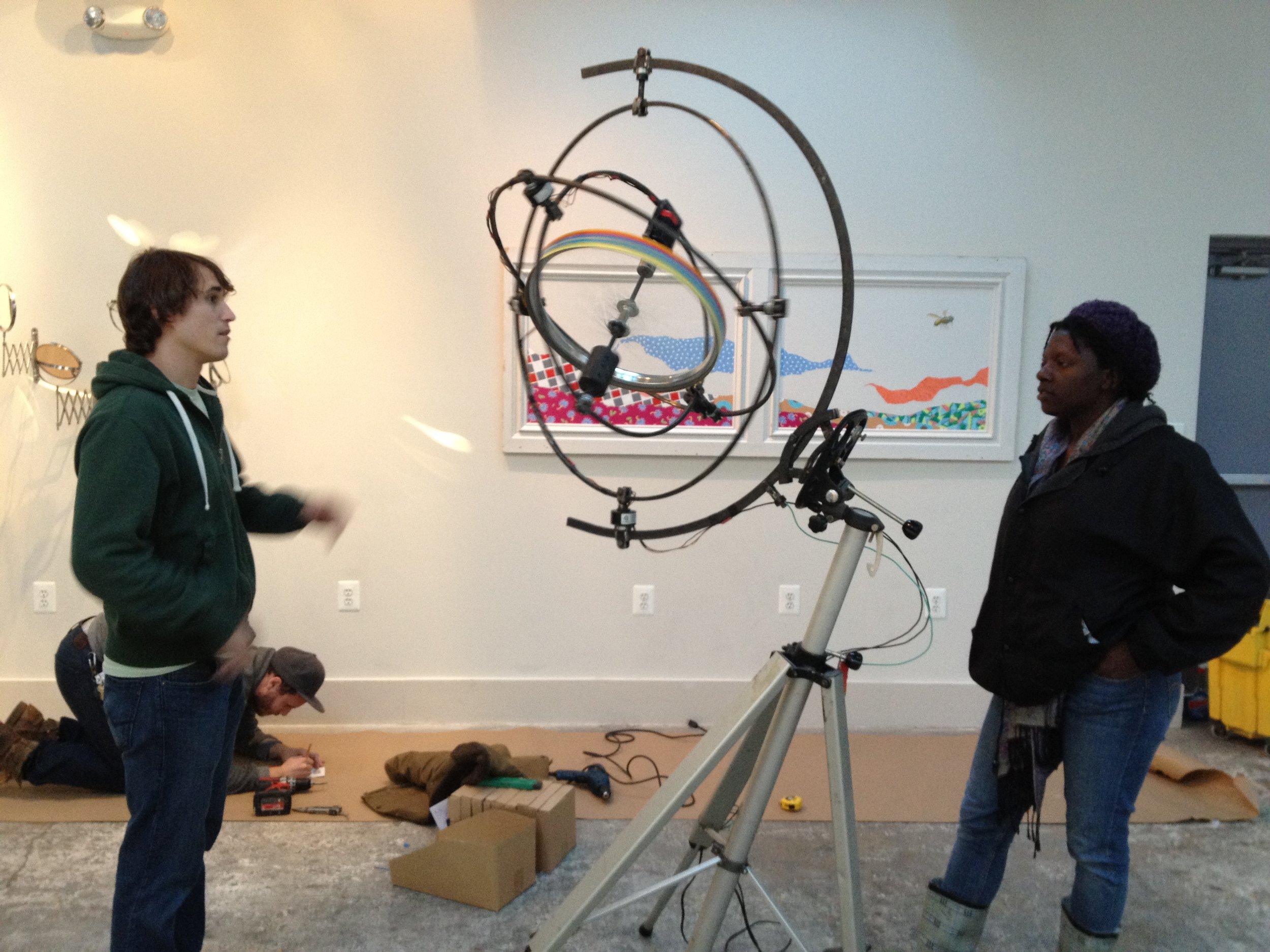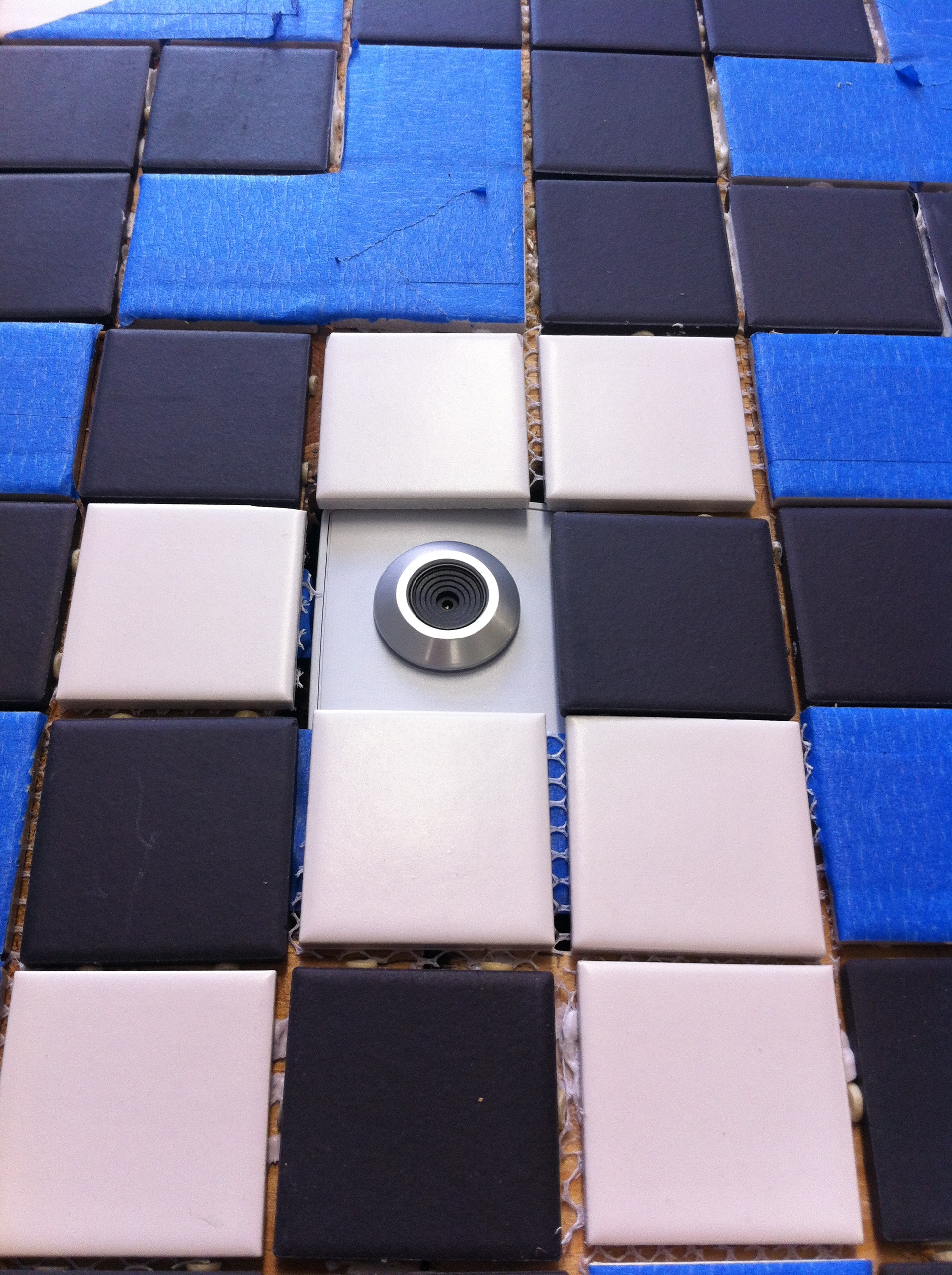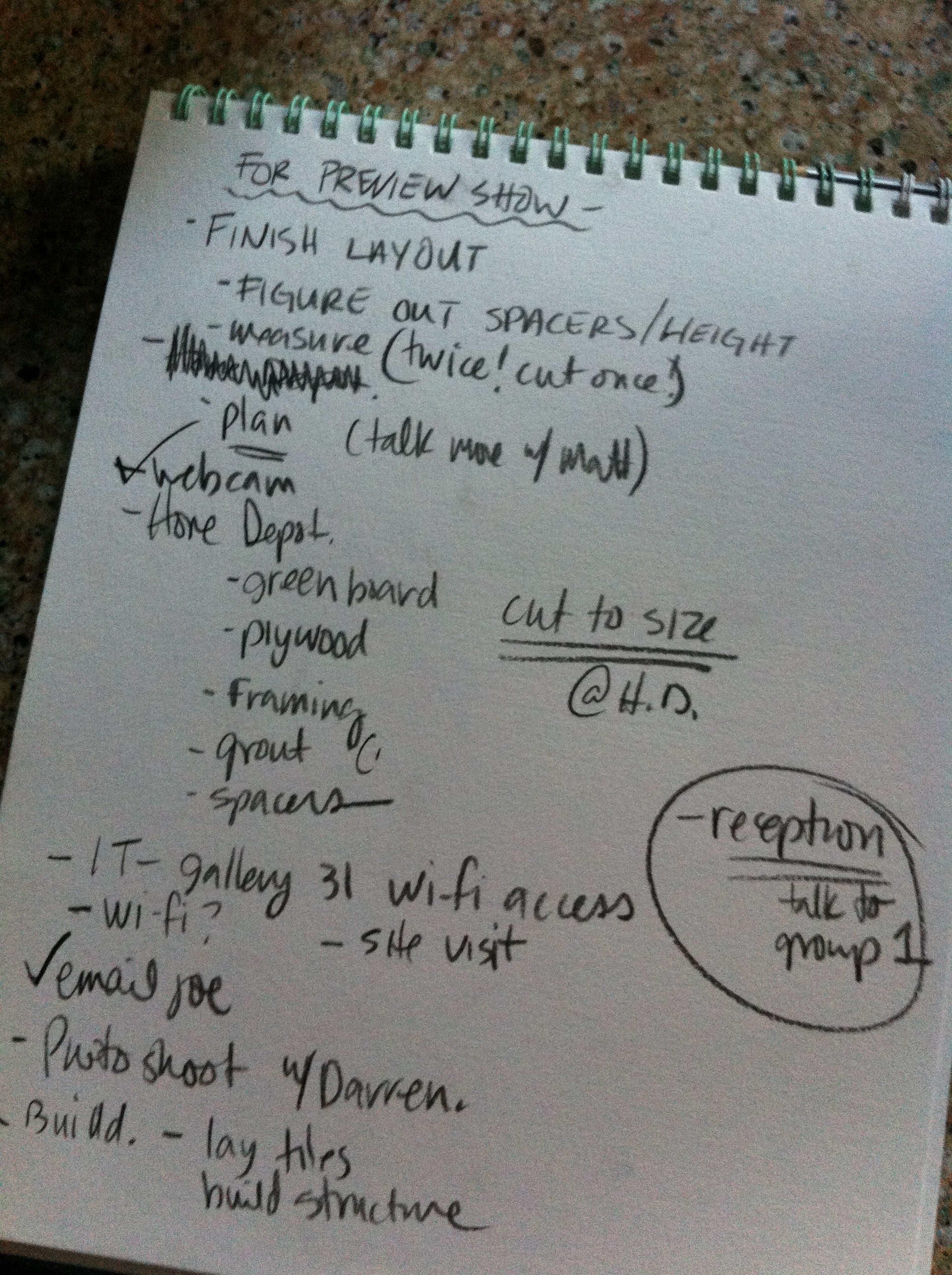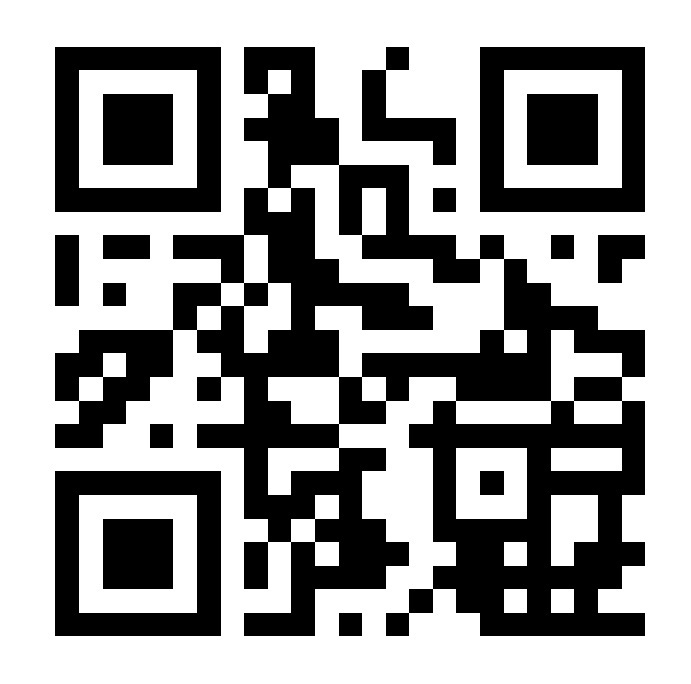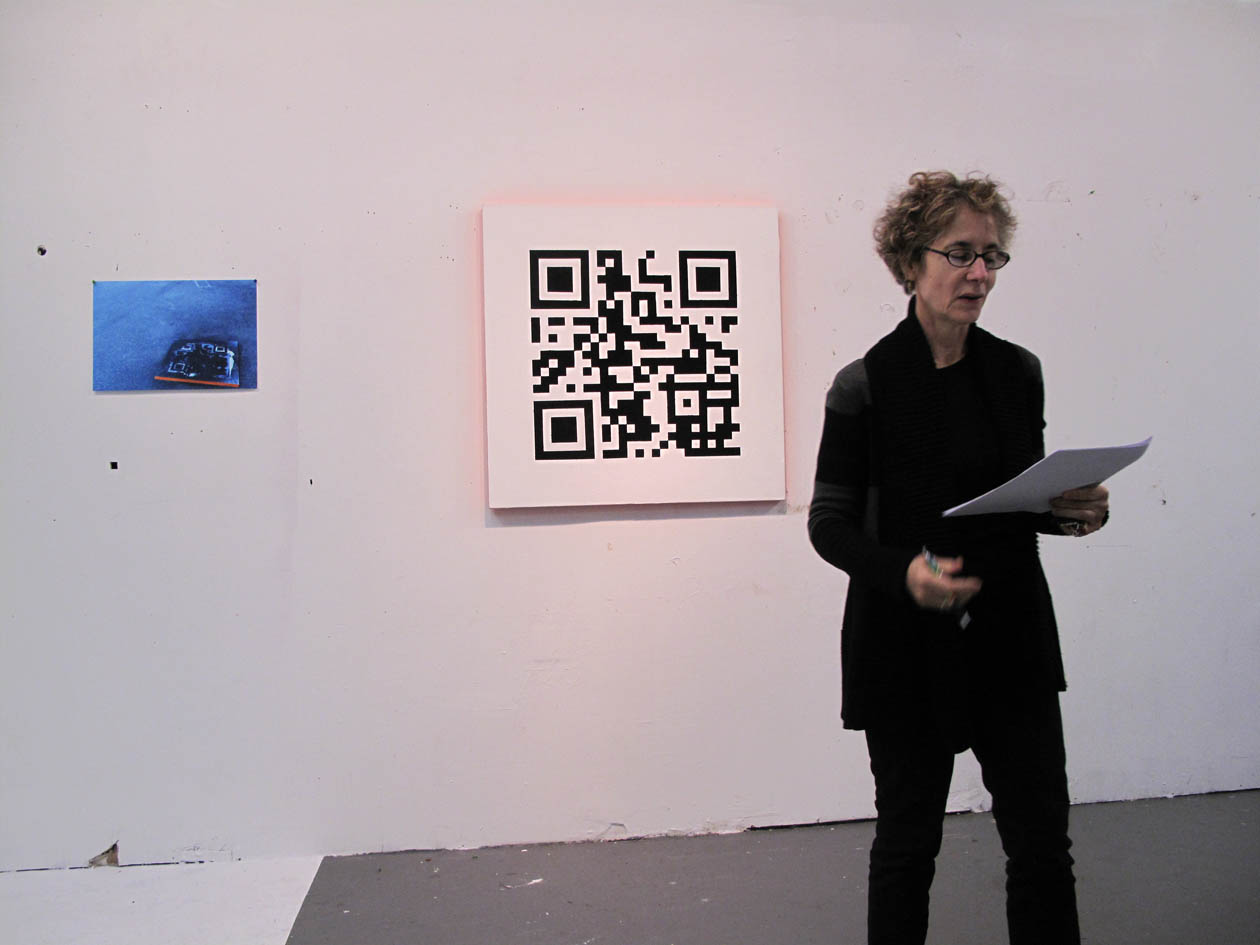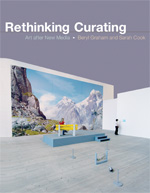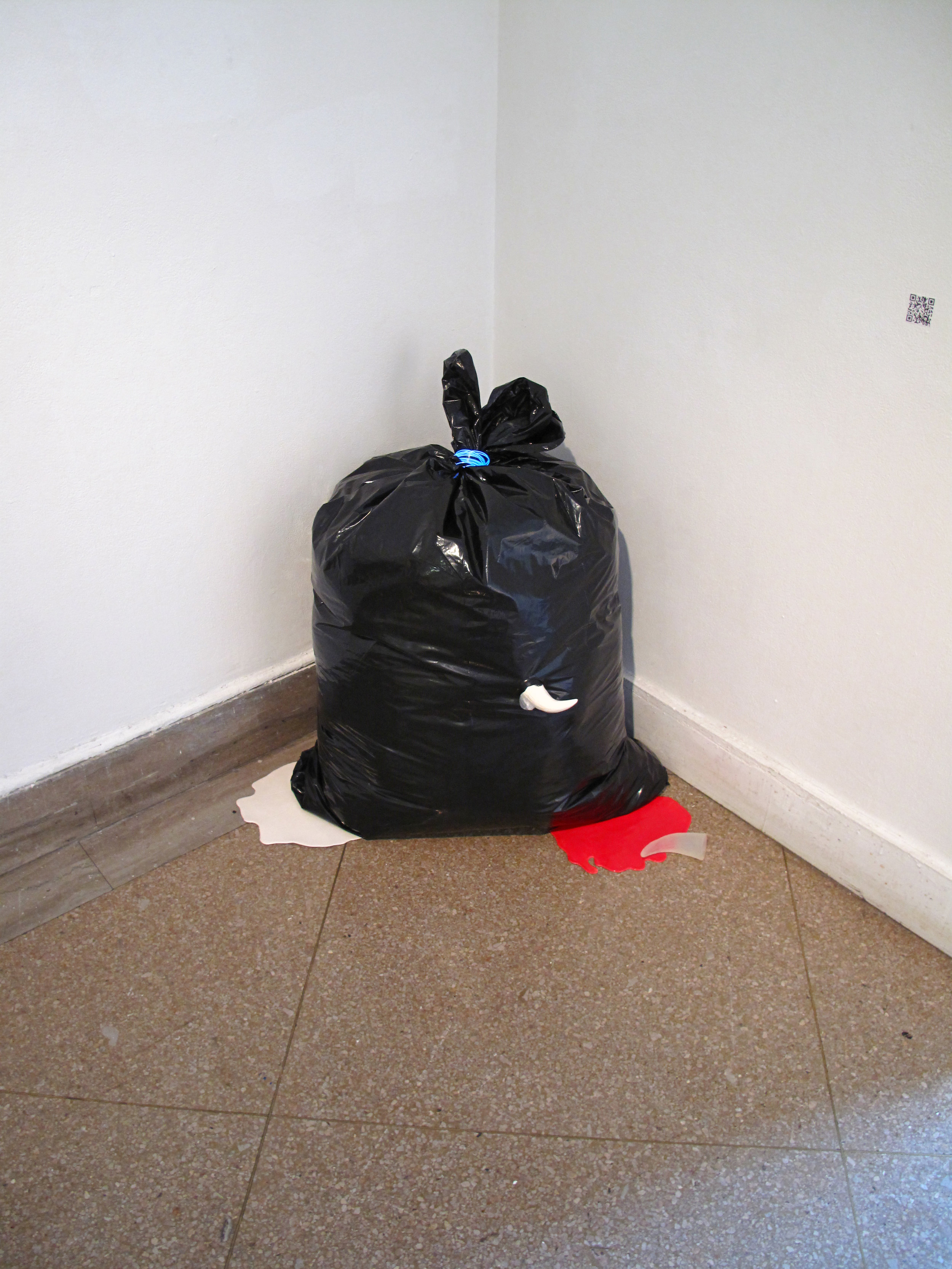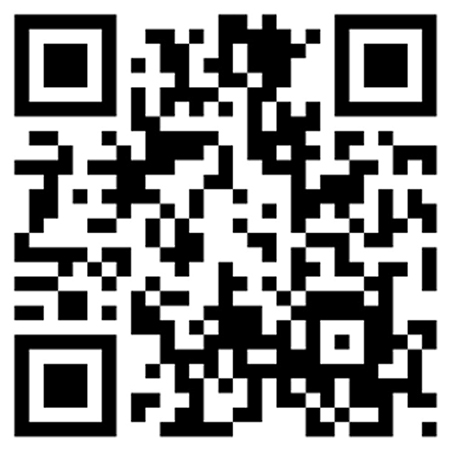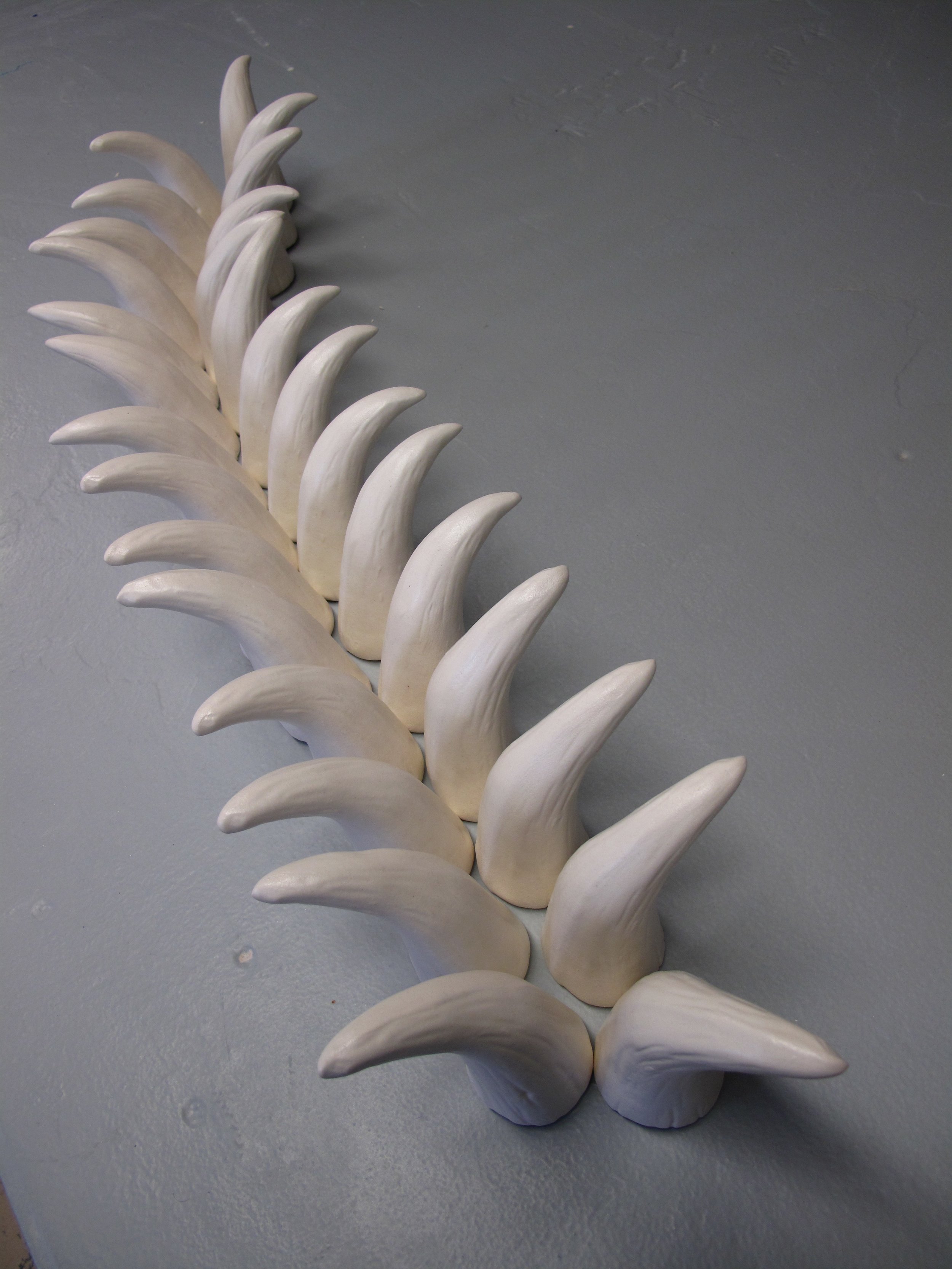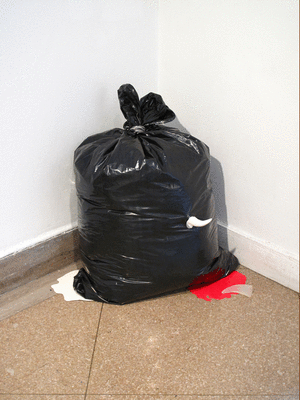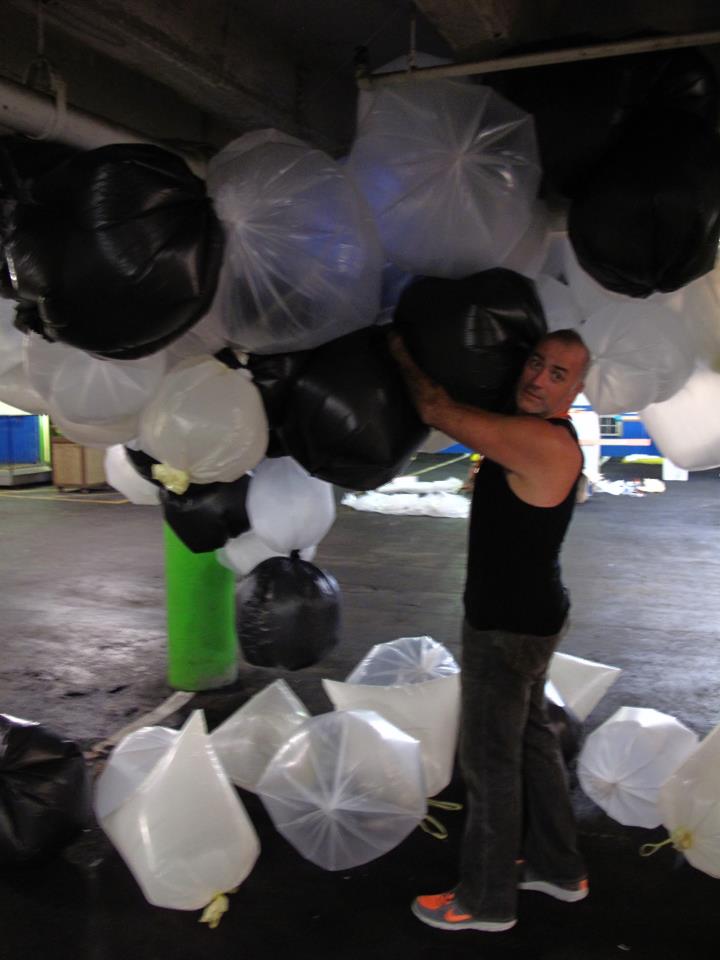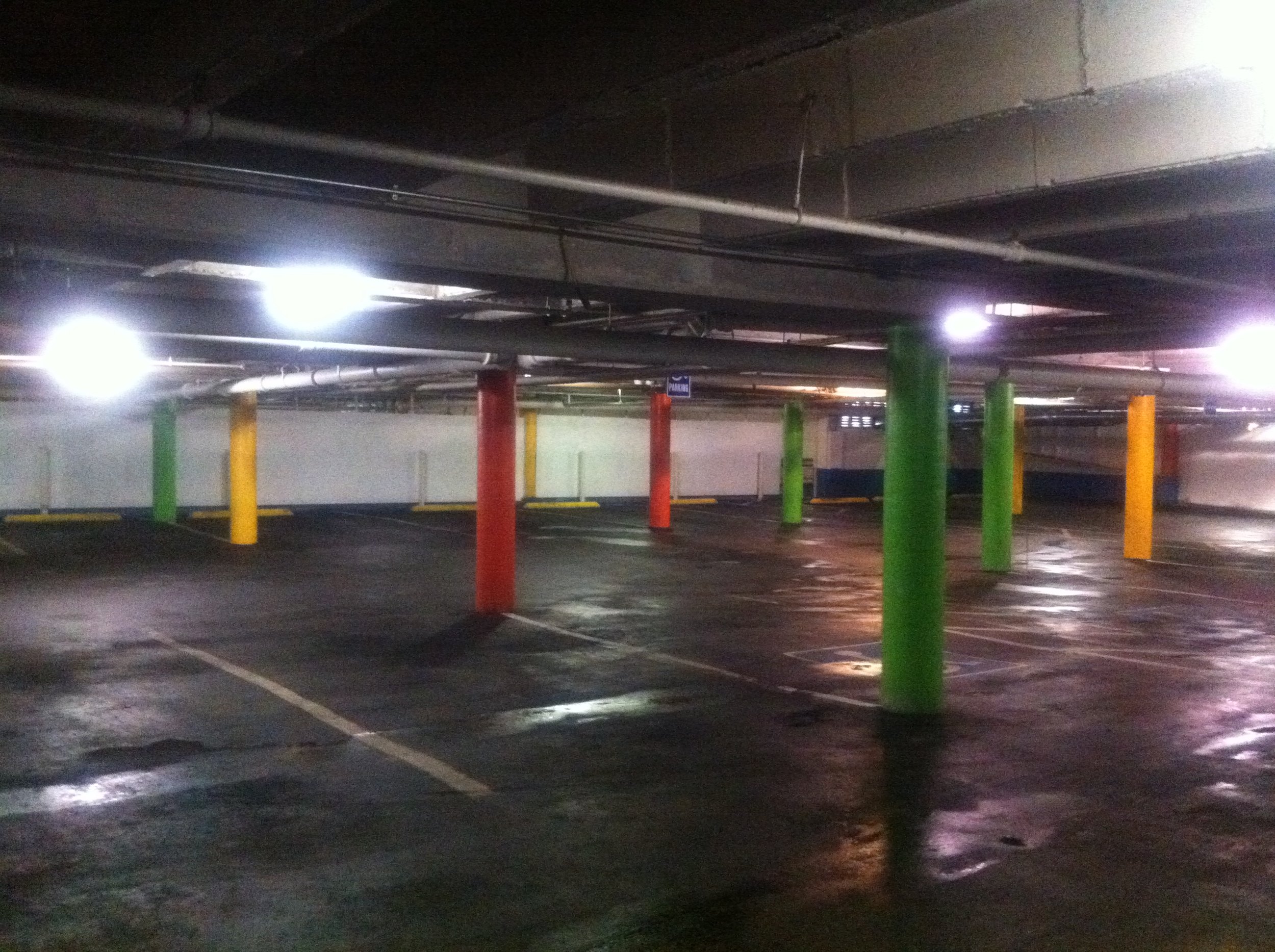It's been since Thursday afternoon that my piece "I Saw Jesus in the Clouds" has been on display at the (e)merge art fair. Over these past few days, i've watched the work transform and slowly become something a bit different than the fully inflated bags that represented the clouds.
Now, the piece has become a great learning experience for me. Spending time near the piece over the past few days has made me think a lot about how people interact with art and how I interact with people interacting with my art - if I do at all. There have been two main take-aways from this experience for me, which ends today:
- Do I, as an artist, interrupt the viewer and discuss my work?
- How do I actually talk about my work?
I have also enjoyed the times that I spent with former Corcoran student and current MAT2 student (the art ed program I am also in) Forest Allread. His work won him a place in the show, and I've always thought that his work was leaps and bounds better than many folks coming out of our school. His work is just so unique and interesting to me. But, anyway, he and I were discussing the 'problem' of when do you - as the artist - approach someone in the art space and interrupt their exploration of the work? I think he and I were both in agreement that you have to really let the people spend the amount of time uninterrupted. But, there is a point when some cues are given that you can talk to them, or if they approach you. I've had both experiences by my work both with different results.
I was watching a father and son (about 7) walking all around my piece, and then the son finally settled in the chair that is nestled under my clouds. I could tell they were having a conversation of some depth. I got curious and slowly started to inch my way closer and closer. The little boy was looking up and all around him. Finally I got into earshot and overheard:

Father: "....but, do you think this is art?"
Son: "...ummmmm....yeah, because I feel different when I look at it"
Well, that was all I needed to hear. Of course a few seconds later he noticed the brightly lit magnet piece across from mine and took off. I can't blame him, i'm easily distracted by the brightness of the piece as well. And, it's got magnets. Who doesn't love magnets?
A little bit later a woman, older, and clearly drunk, wanders into my space. She's puzzled and appears frustrated. I intentionally decided to interrupt her because I knew she probably needed my guidance. I chose poorly.
She didn't know that the piece was mine, and I approached her - cautiously - and said hello. The floodgates of confusion burst and her unsuccessful day of looking at and interpreting emerging art and artists was spewed all over me.
Lady: "....Can you splain thish to me? I jush don' get it...."
me: (after taking step back, not sure if I could get contact drunk) "Sure, it's about white trash"
Of course, my description was a little bit longer, but the funny thing is she then finally understood it. The 'it' being ART in general. We had an interesting conversation about art and that it is ok not to understand it all. This woman was probably in her late 60s and like I mentioned, she was drunk. But I think she was drunk because the day for her was so frustrating. The gallery rooms on the 2nd and 3rd floors could be intimidating to the casual art viewer. Even I had problems understanding some of the concepts. But this drunk woman was upset with herself because she didn't understand the art that she so desperately wanted to 'get.'
I told her that it was ok not to understand it all but that she had to focus on what she liked and then could dig in and ask questions. Finally, her eyes lit up like it was me that finally gave her the validation that she wasn't stupid for not understanding what she was seeing. At one point Mia Olsen (whom I adore) came up and I asked the lady if she remembered the 'room with the hair all over the bed' "YESH! I didn unnershtand that."

me: "That was Mia's work"
A few seconds of awkward entered the conversation again, but I think the woman was finally OK not understanding some work. At this point I directed the woman to the Art Whino area, armed with a new sense of understanding the art scene and knowing it was OK to be puzzled by work.
me: "Sorry, Mia, I had to help that woman drive the bus that just ran both of us over"
But, all of these exchanges also made me realize that sometimes people DO need the help of an artist statement or some sort of explanation of the work. We are not all art students and lovers of art or art theory. I realized that my work may be different things to different people. (let's face it, my piece is a bunch of garbage bags tied together...) Some people need the work explained in terms that they can identify with. I can tell them what it means to ME, but they will interpret it based on what they bring to the work.
guy with long ponytail: "I have work in this show too."
me: "GREAT! what is it?" (I realized afterwards that his statement was a challenge to me, but I took the bait anyway)
guy with long ponytail: "I installed the walls and drywall [that enclosed] the space."
my thought bubble said "OH FUCK, now what do I say?"
me: "GREAT! thank you for your effort, fine job you did."
his girlfriend with the 'Buddha Say Relax' tshirt: "Can you tell me about your work?"
my thought bubble repeated, louder this time: "OH FUCK, now what do I say?"
me: "It's about sitting under the clouds and meditating on what you may find"

They both took off arguing over who would sit in the chair first. They took turns taking pictures in the chair, and I took pictures of them as a reminder of this exchange.
After they were done, the woman came over and suddenly was full of insight into the work as if Buddha himself whispered the meaning to her. And as they walked away, lured again by magnets, they kept looking back and pointing, seeing different things in the cloud.
Sometimes you have to tell the people what to see. And sometimes, they tell you what THEY see and it brings further meaning to the work that may not have been there in the first place.
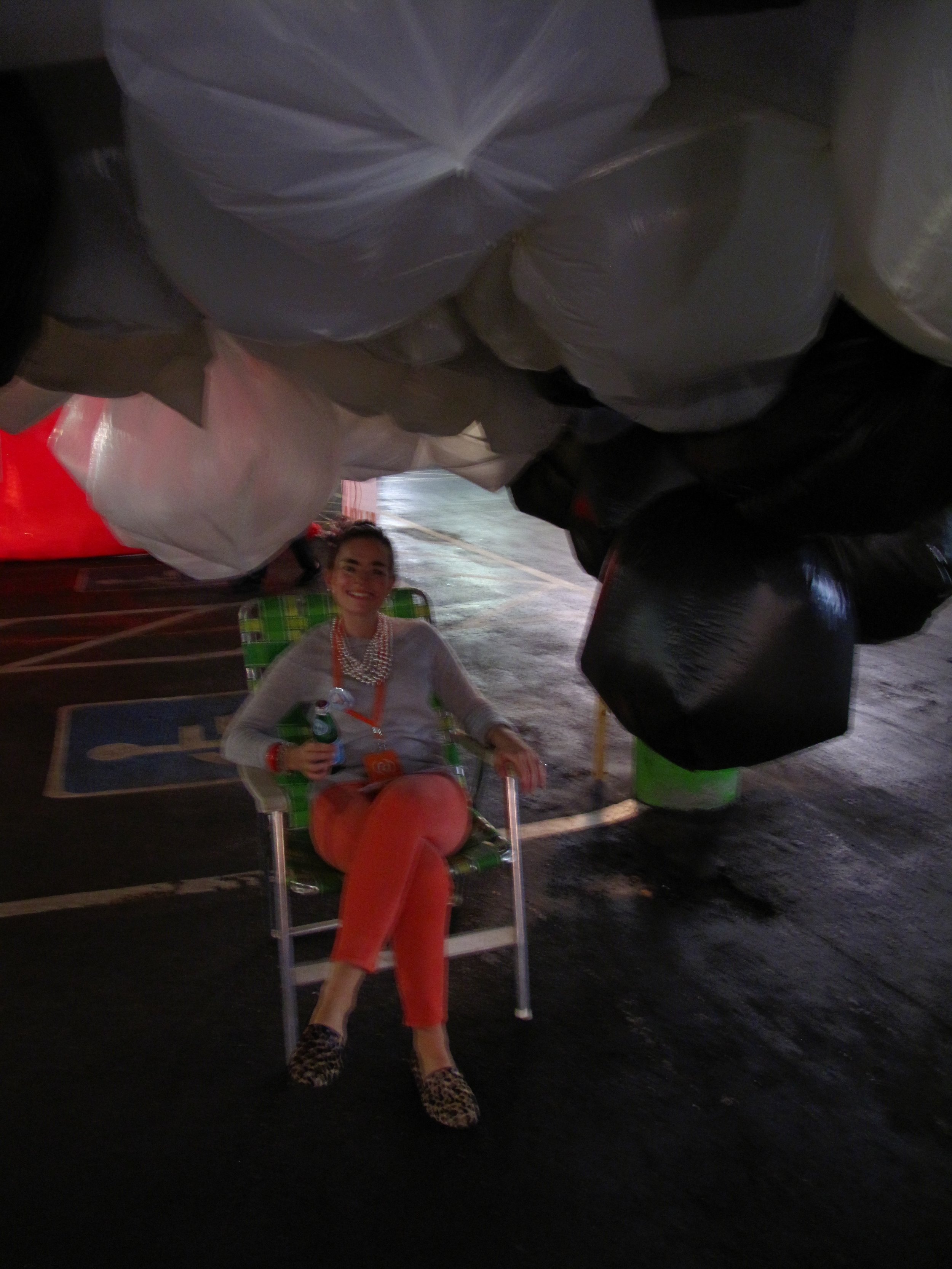
But of all the interactions I had with people, the most special to me was walking Jacquie Ionita - the Gallery Directress at Hamiltonian Gallery - through the piece. I don't really care to tell everyone about our exchange, but in just a few minutes she gave me the best advice for talking about my work.
Because of that, I feel different now.
I feel like an artist.
 Last night I received an email from my friends at Dropcam and they are sending me my cameras...I even have a tracking number that I will begin to obsessively check every five minutes until they arrive. (personally, I LOVE tracking my shipments) I can't say how excited I am that I will have my cameras in time for the test run in Gallery 31, and to be able to really use and promote this fantastic product.
Last night I received an email from my friends at Dropcam and they are sending me my cameras...I even have a tracking number that I will begin to obsessively check every five minutes until they arrive. (personally, I LOVE tracking my shipments) I can't say how excited I am that I will have my cameras in time for the test run in Gallery 31, and to be able to really use and promote this fantastic product.